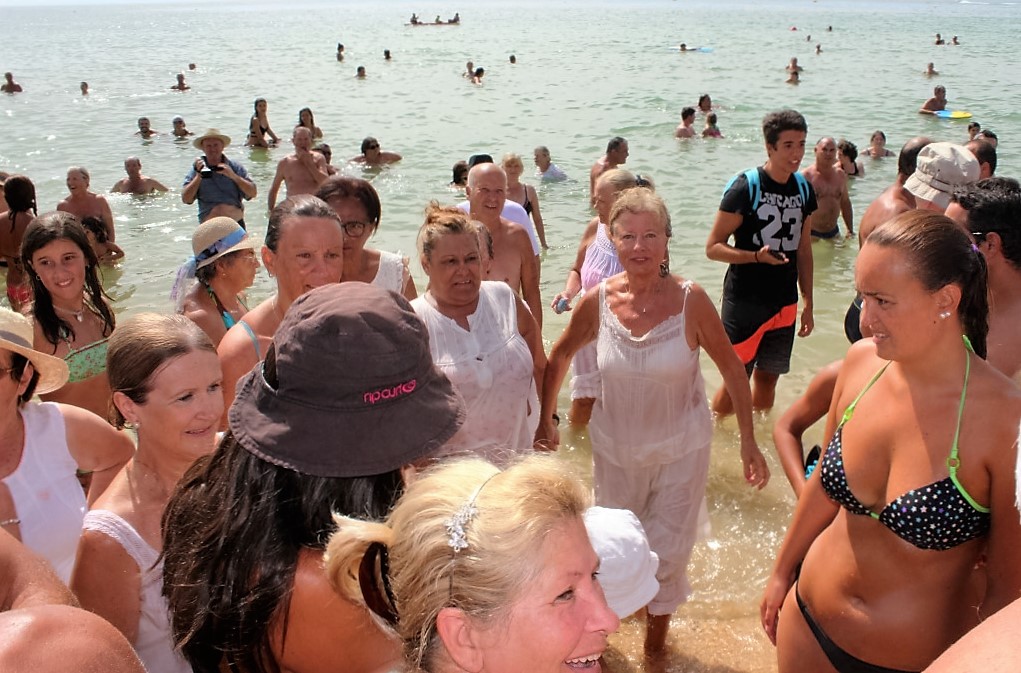
They go out to sea wearing nightgowns, breeches, underwear and even undershirts and it's already quite fresh that they sit on the blankets, spread out on the sandy beach of Manta Rota, to eat the snacks they brought with them from the mountains.
The tradition of the Holy Bath of 29 August was fulfilled again this Monday in that town on the coast of Vila Real de Santo António, with the right to the historical recreation that the association A Manta has been promoting for about 20 years, to keep the city alive. memory of an initiative that no one knows exactly when it started, but which is more than a century old.
«These must be the oldest festivals in the county. I've always known this and already my grandfather talked about them», framed Romano Justo, 69, president of the A Manta association. And it is with a gleam of joy in her eyes that she helps to revive a tradition that insists on making others known.
«In the past, people had many difficulties to come, but they came with the animals they had: donkeys, horses, mules and males. They arrived on the 28th and stayed overnight on the floors of the farms here in Manta Rota. On the 29th, it was the Holy Bath. They took three baths, one at dawn, another at midday and the last at sunset,” recalls Romano Justo.
People who came from far away believed that the bath, taken on the day of São João da Degola, was purifying and able to avert all evils. And even the animals were taken into the water.
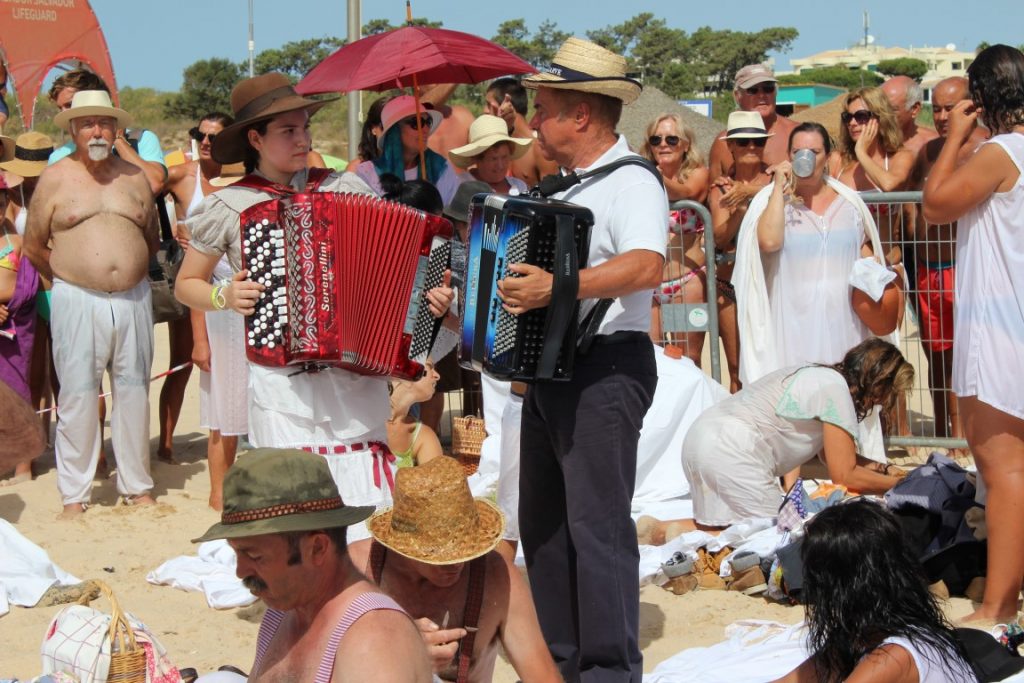
Born in Manta Rota, the president of A Manta, like other young people from this coastal town, eagerly awaited the pilgrimage of the people of the mountains. This is because it was an opportunity that boys had to see the girls “better”, since, at the time, when it came to going to the bath, being covered didn't mean being less exposed. On the contrary.
«Nowadays, everyone wears a bathing suit, but at the time, they didn't wear anything underneath, it was all natural. Linen, when it's dry, you can't see anything, but when it's wet you can see everything. saw the landscape all (laughs). We, the seafarers, made holes in the sand and buried the girls' clothes, so that they would take more time looking for it and we would have more time to appreciate it», recalled Romano Justo, amused.
Nowadays, there is always a swimsuit to protect from the most prying eyes. What remains are the donkeys, horses and mules, which join together to accompany the dozens of people who participate in the historical recreation of this tradition. But animals no longer enter the beach, as required by public health rules.
For the rest, the bath is maintained, followed by a meal with many sausages, cheese and wine, as was done in the past. The table is also plentiful in good mood, which infects the many curious people who gather to watch the initiative, namely tourists who, these days, are in their thousands on this beach in Sotavento.
At some point, this ritual stopped being done, even because of accidents that happened with some regularity. «The people who came were used to bathing in the pegos. And sometimes they came here, especially when it was Levante, and they weren't counting on the current. Many people ended up dying and these parties stopped being held», he explained.
But 20 years ago, a group of locals made a point of reviving this tradition, ending up creating the association A Manta, to better keep this and other memories alive.
Photos: Hugo Rodrigues e Pedro Lemos|Sul Informação
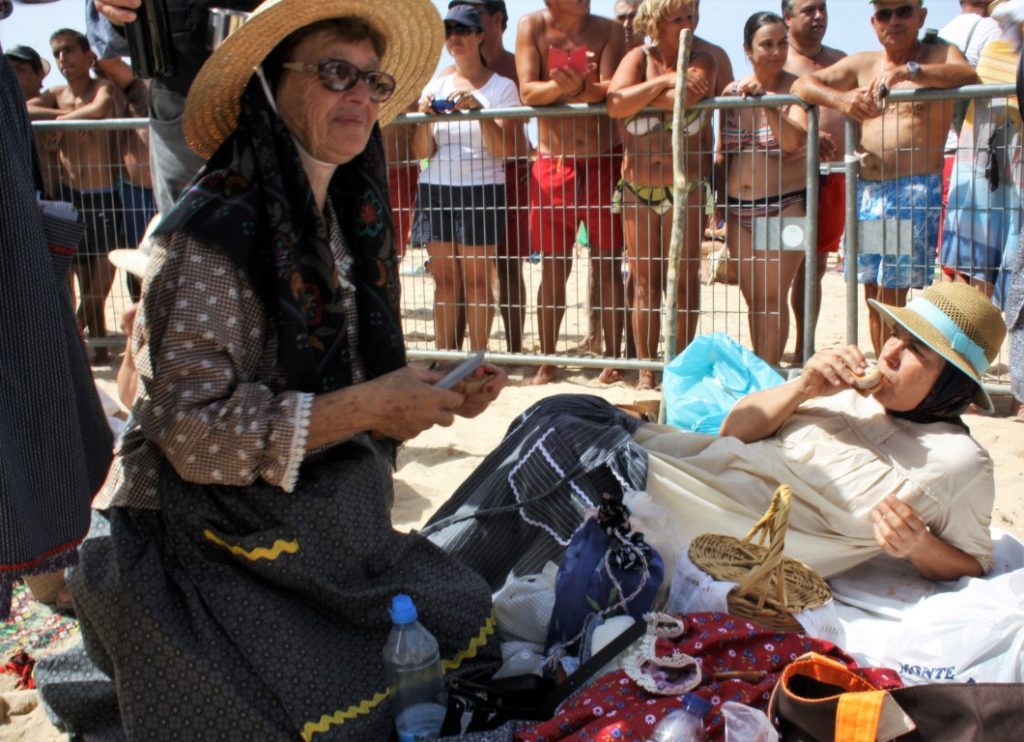
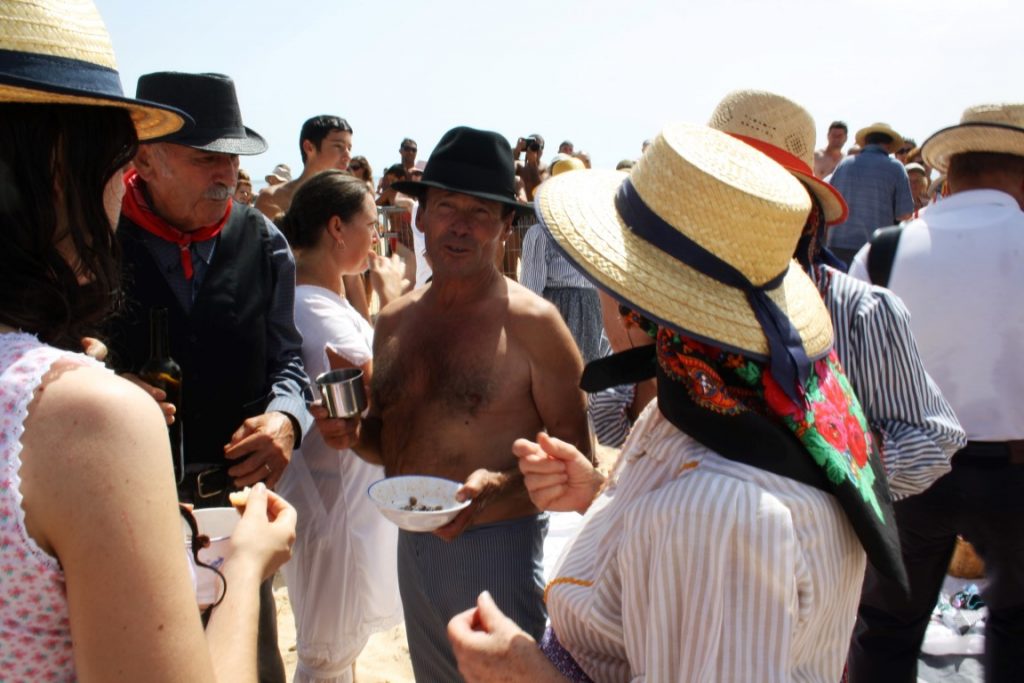
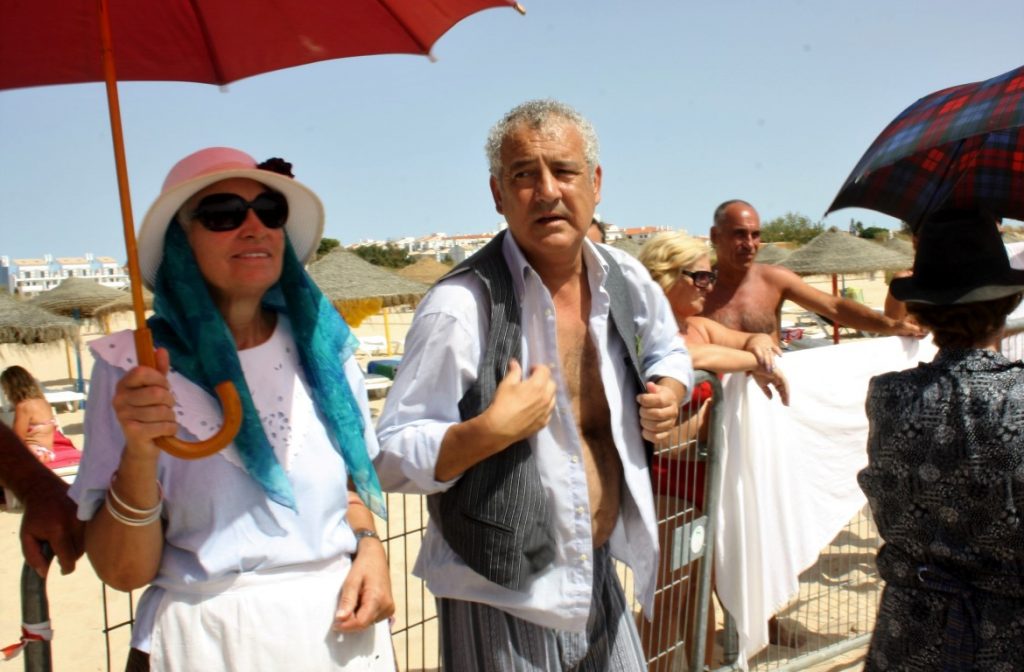
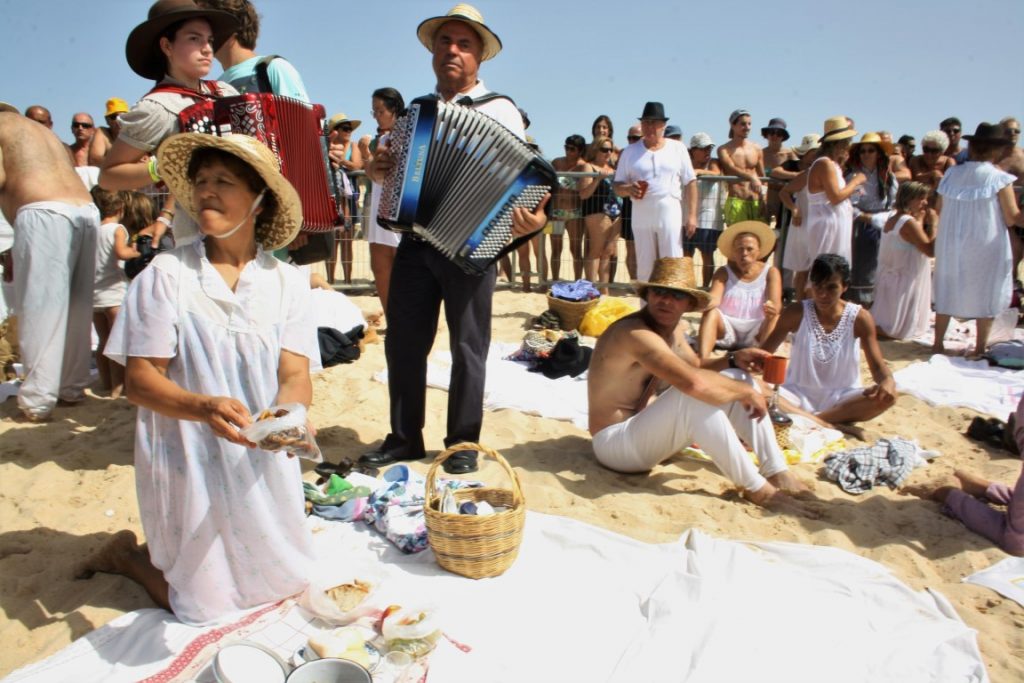
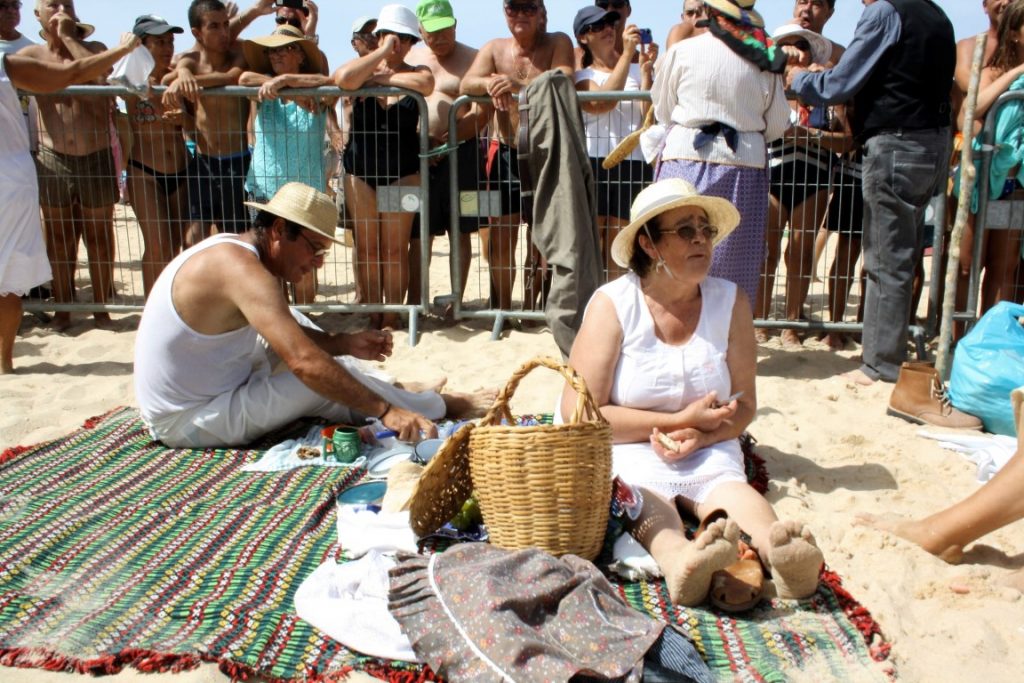
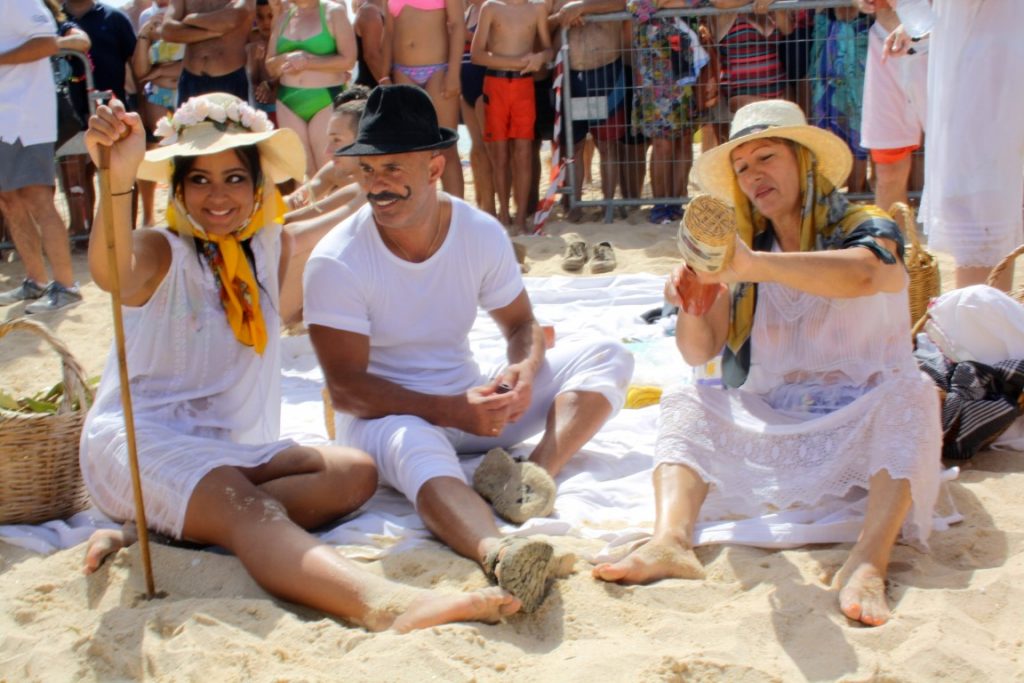
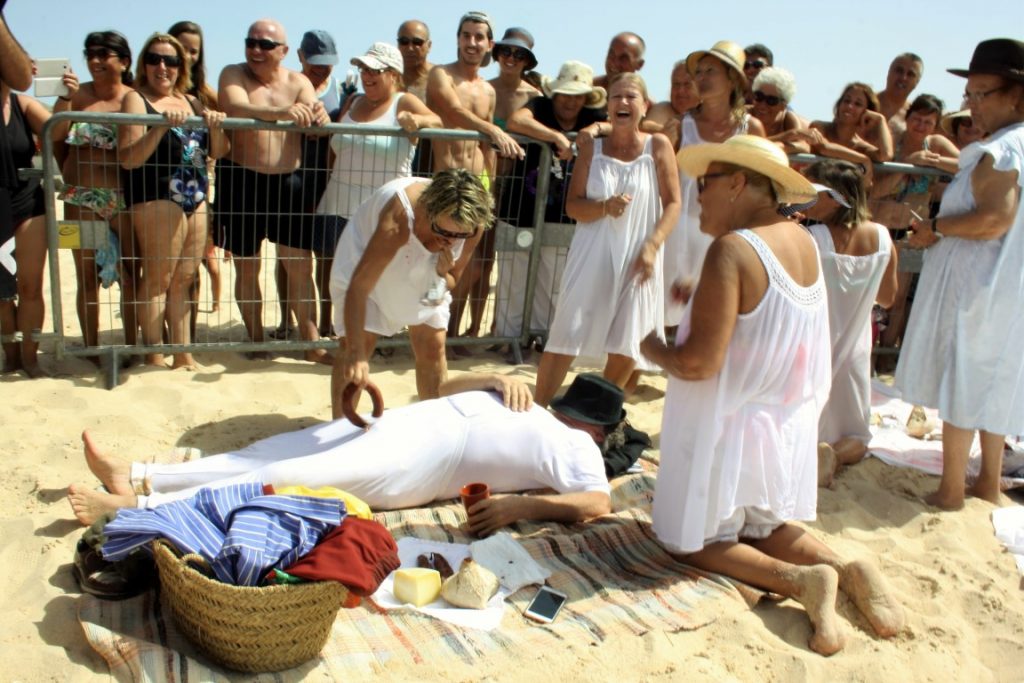
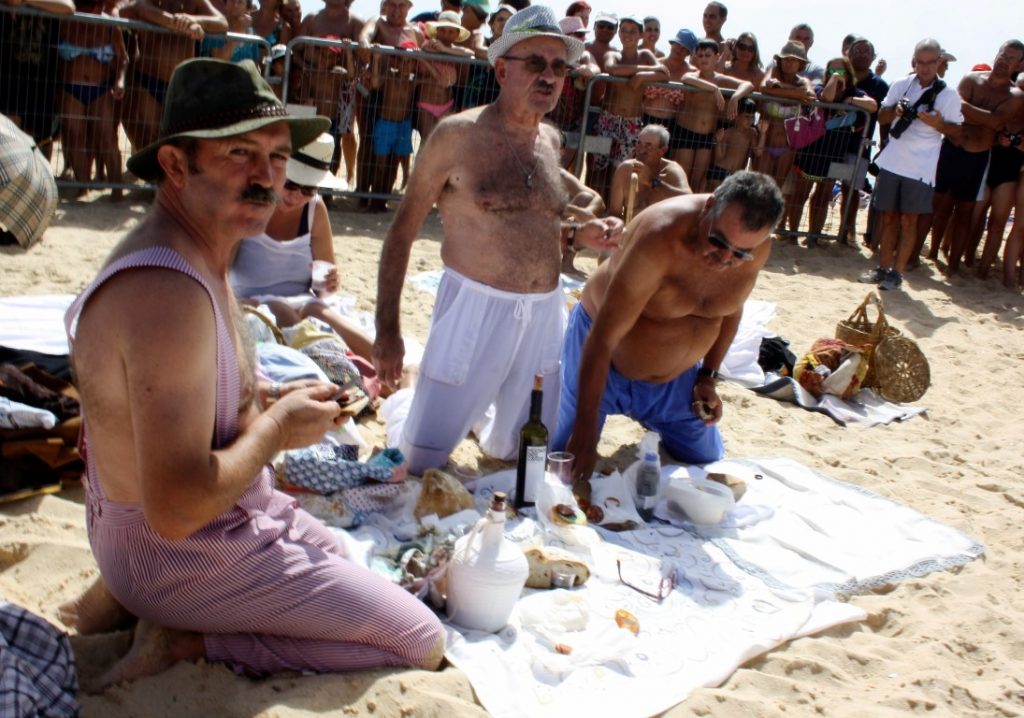
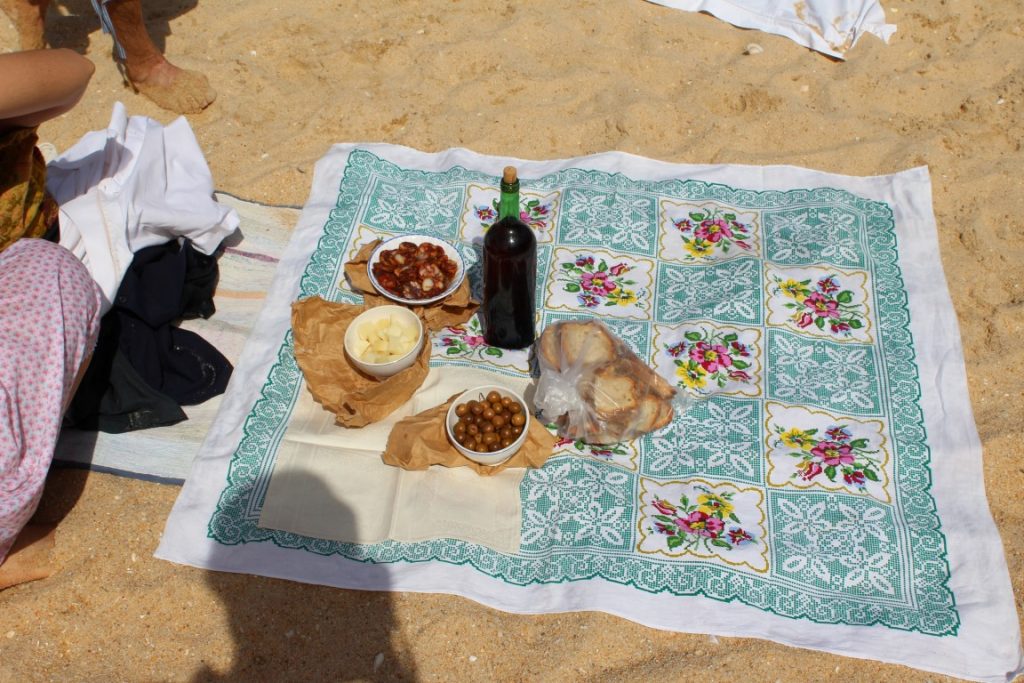
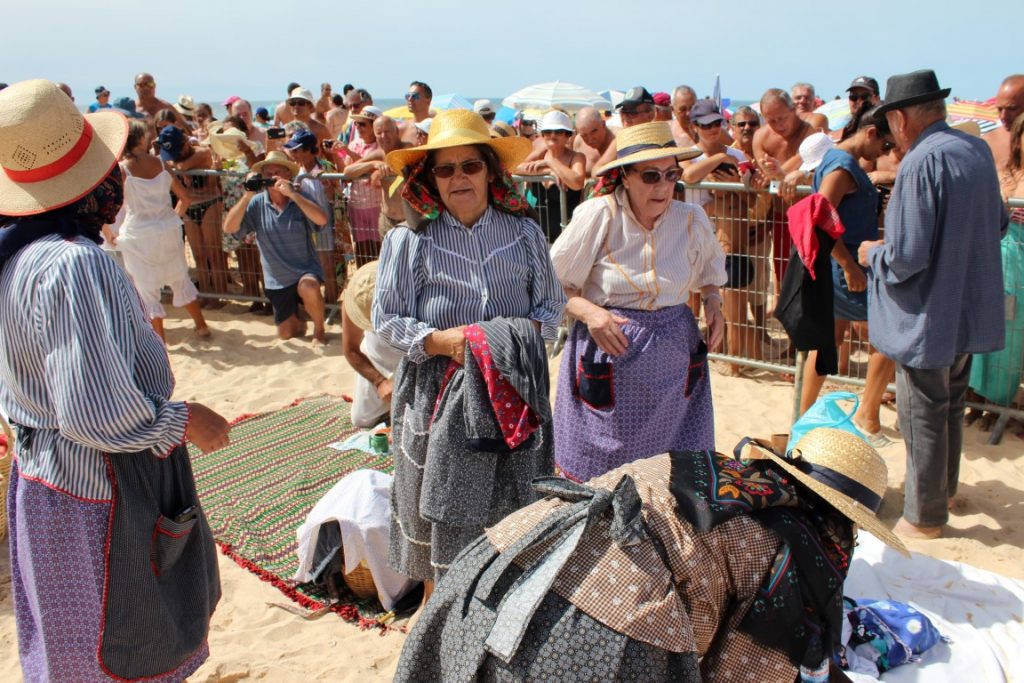
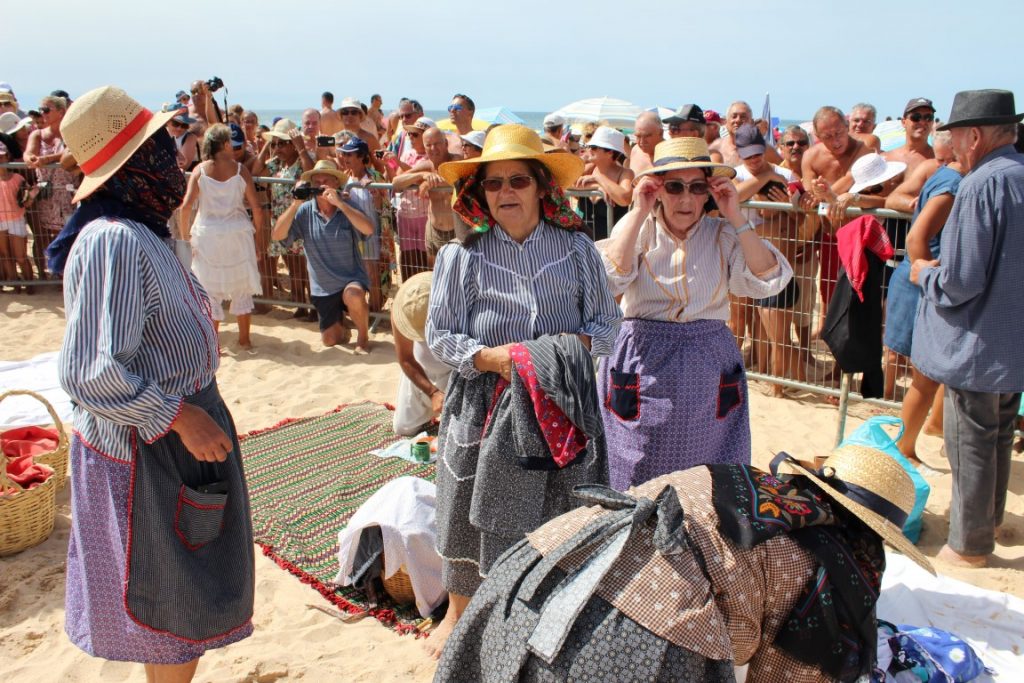
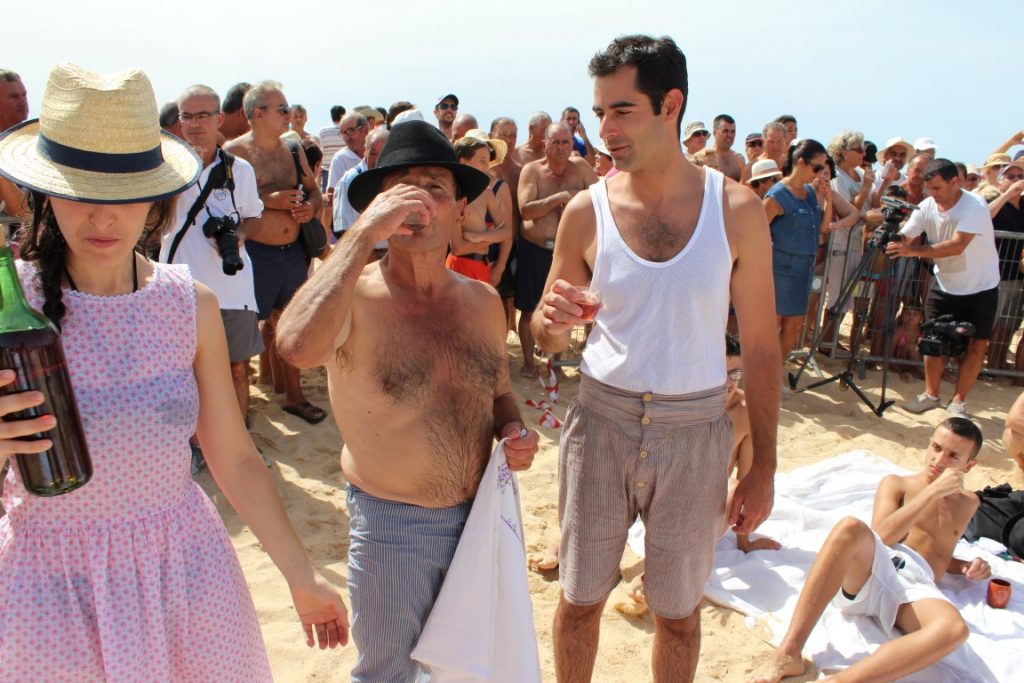
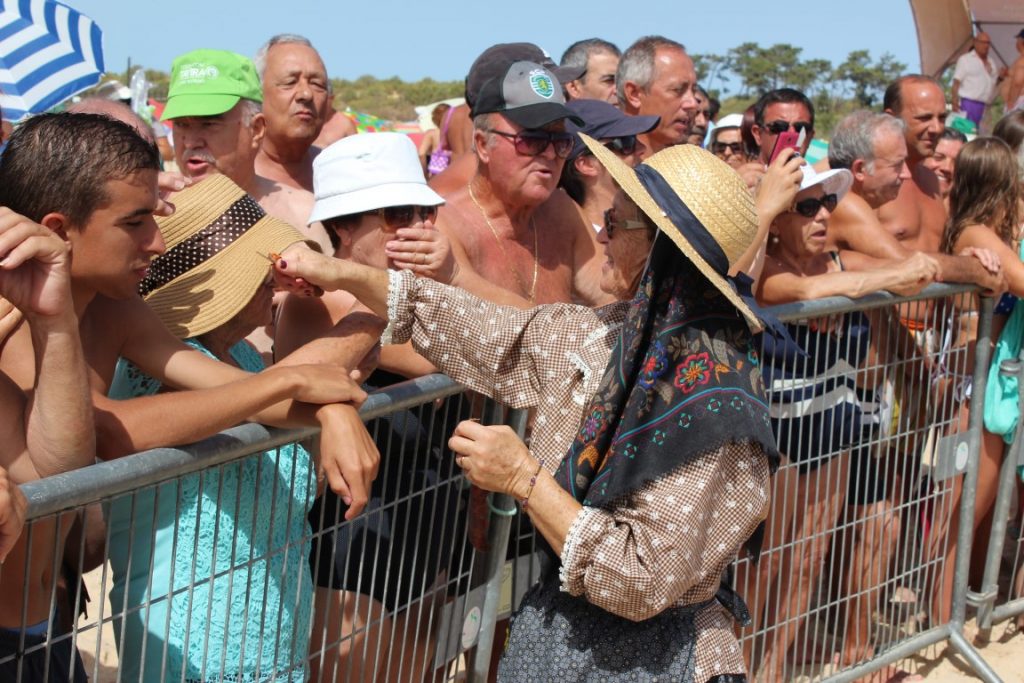
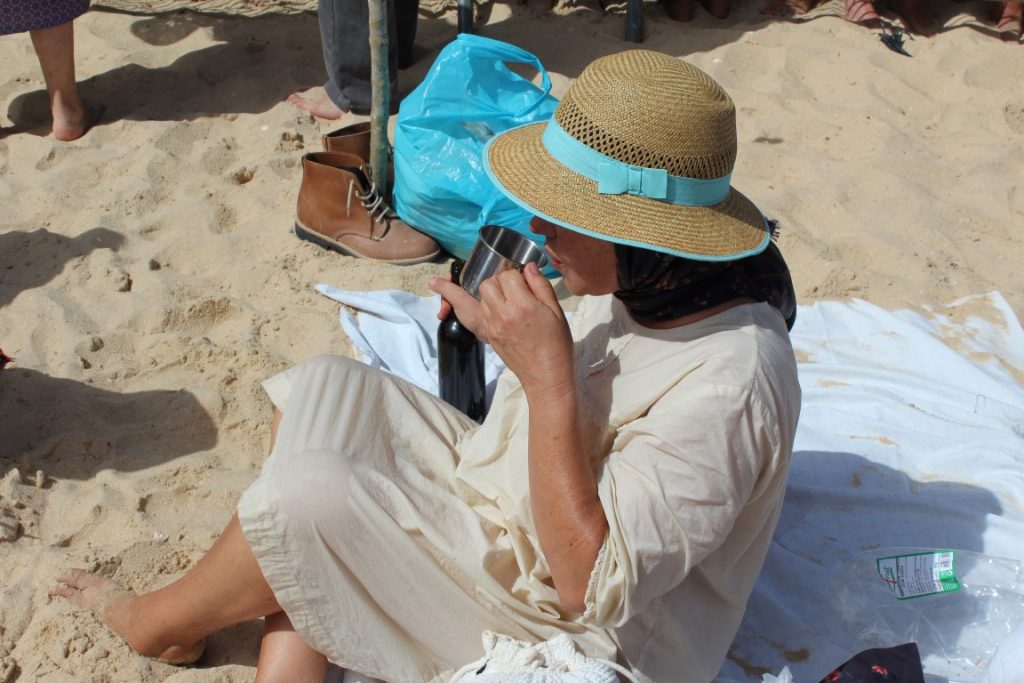
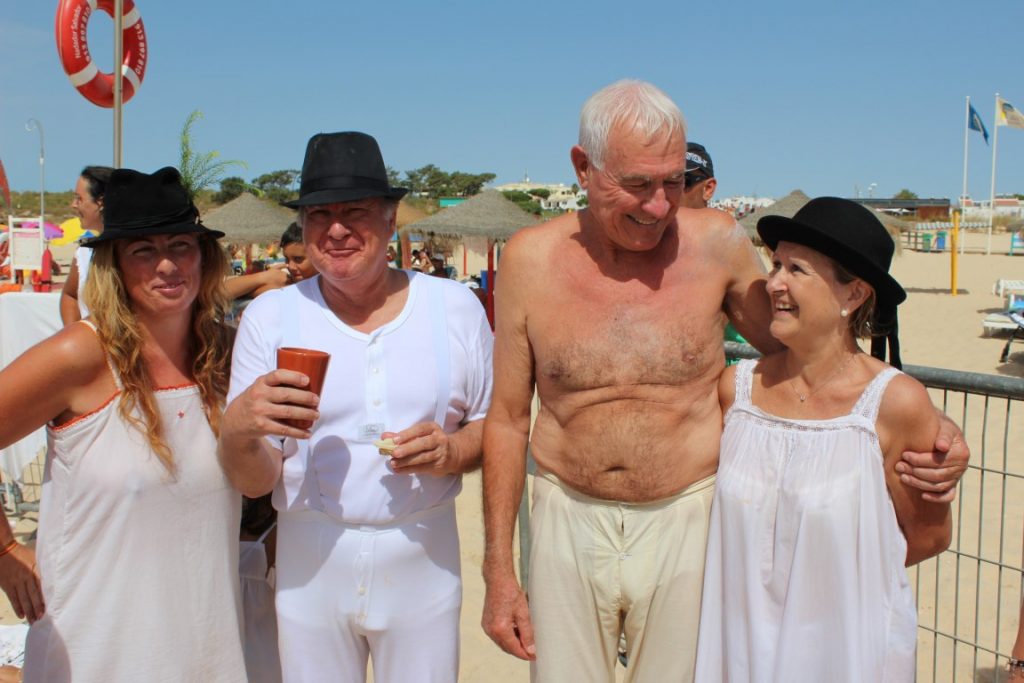
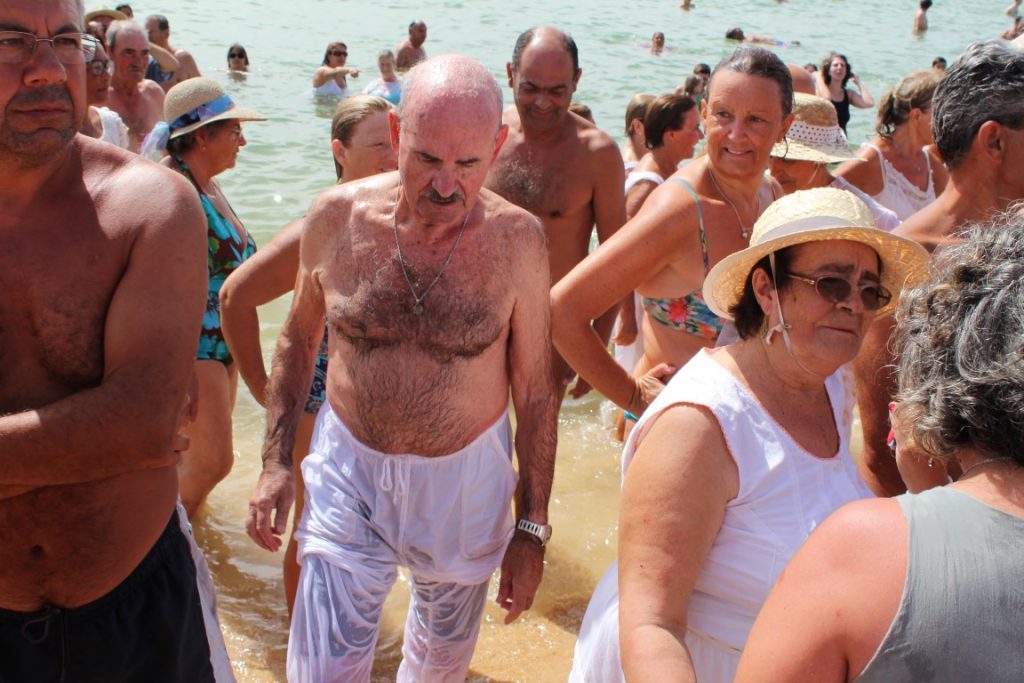
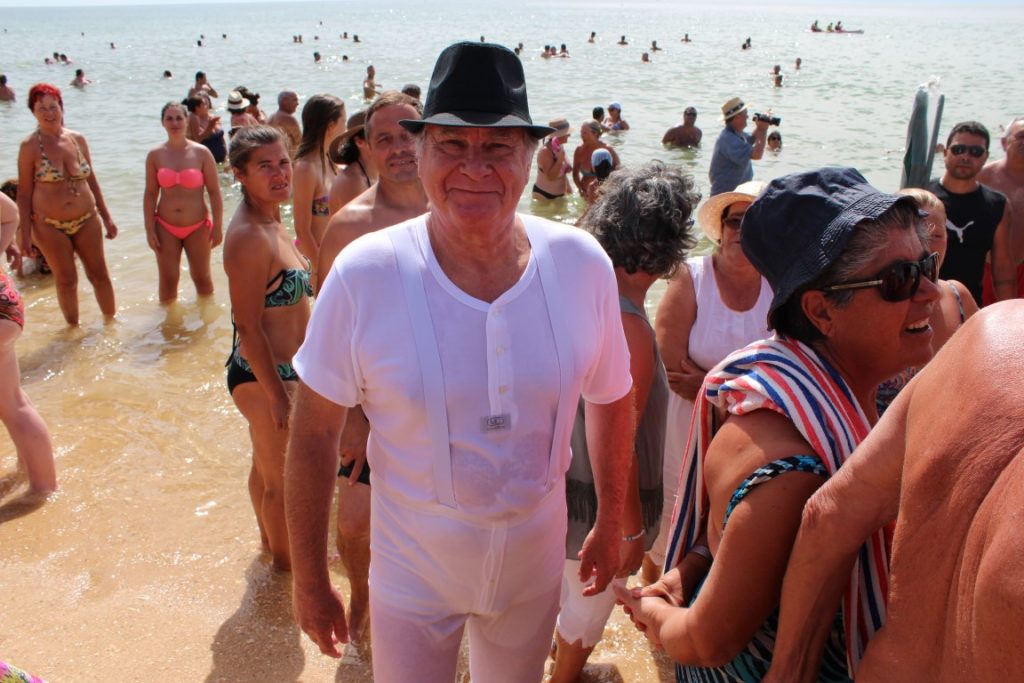
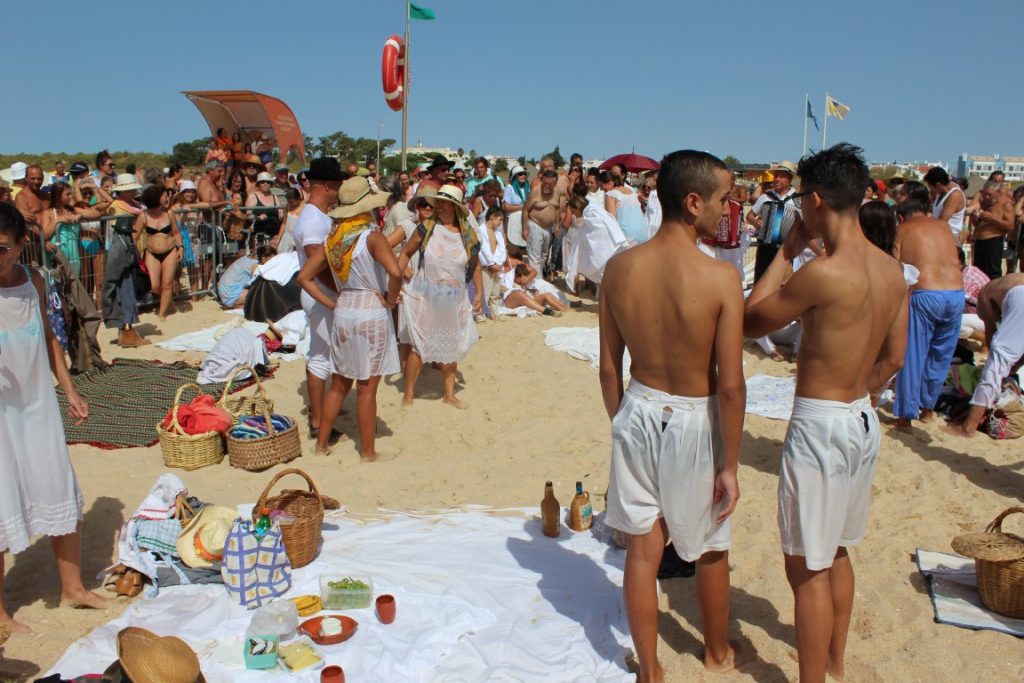
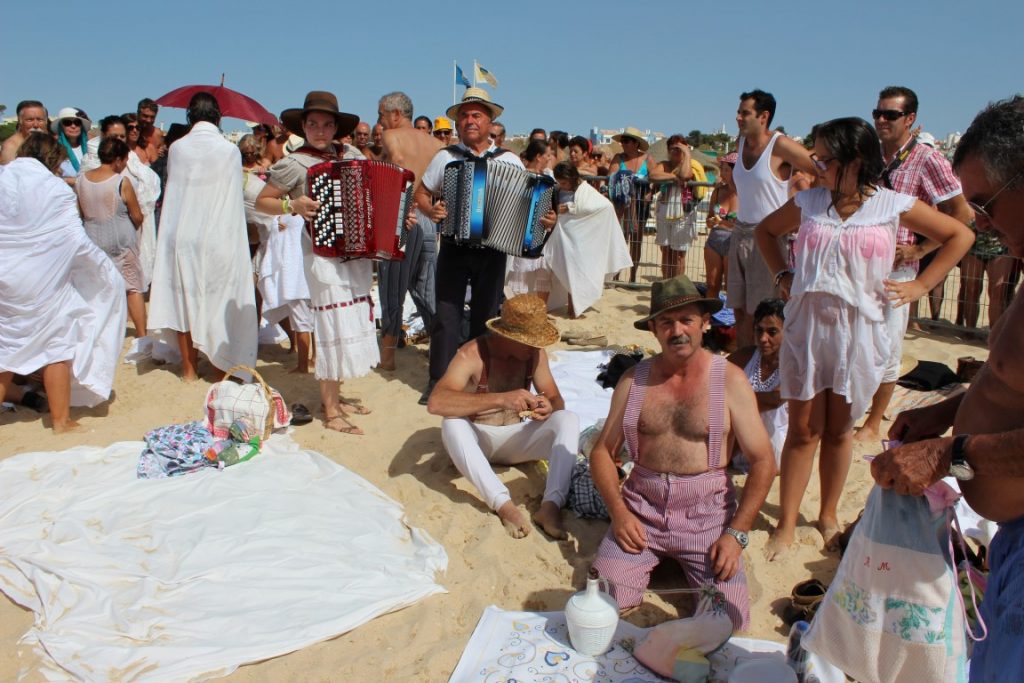

















Comments